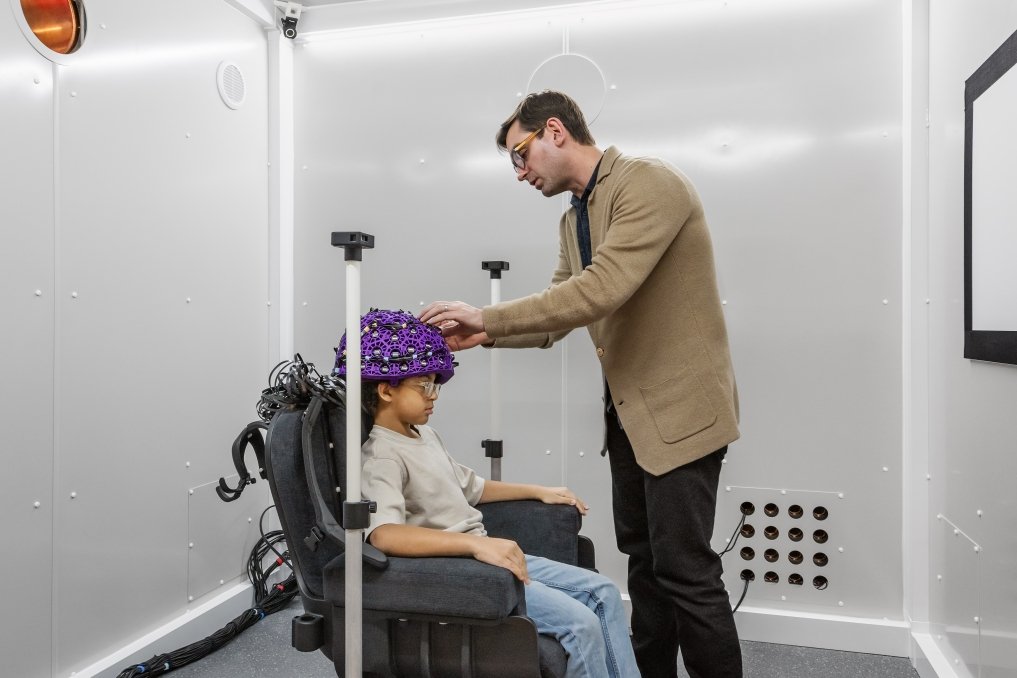Magnetoencephalography (MEG)
About the instrument
Magnetoencephalography (MEG) reveals brain function with millisecond precision by measuring the minute magnetic fields generated by neural activity. BrainWorks houses two MEG systems, a conventional cryogenic SQUID system with limited participant mobility and the world’s first installation of a triaxial optically pumped system (OPM).
OPM does away with the superconducting sensors in SQUID MEG that need to be embedded into a large machine and maintained at near-absolute zero temperatures by liquid helium. Instead, OPMs measure the tiny magnetic fields generated by the brain using a laser-based quantum technology. This technology improves both sensitivity and accuracy when localizing brain activity. The sensors are embedded into a wearable cap, which can be adapted to different head sizes, including young children. The result is that brain function can be studied more flexibly in naturalistic tasks that involve participants moving, thus creating more true-to-life and engaging experiences, including with VR.
Available to Yale researchers only

Specifications
MEGIN TRIUX Neo SQUID
- 306-channel system
- Simultaneous 32-channel EEG
- Simultaneous EOG, ECG, EMG recording (up to 16 bipolar signals)
- Polhemus electromagnetic digitizer for co-registration
- Housed in a 4 x 3 m2 magnetically shielded room
- ProPixx projection system (1080p @ 120 Hz)
- Pneumatic earphone system
- A range of fiber optic response boxes
- SR Research EyeLink 1000+ eye tracker
Cerca Magnetics OPM
- 64 triaxial QZFM Gen-3 sensors (192 channels)
- Housed in a 2.4 x 2.8 m2 magnetically shielded room with active shielding
- 1080p @ 60 Hz projection system
- Free field stereo audio
- A range of fiber optic response boxes